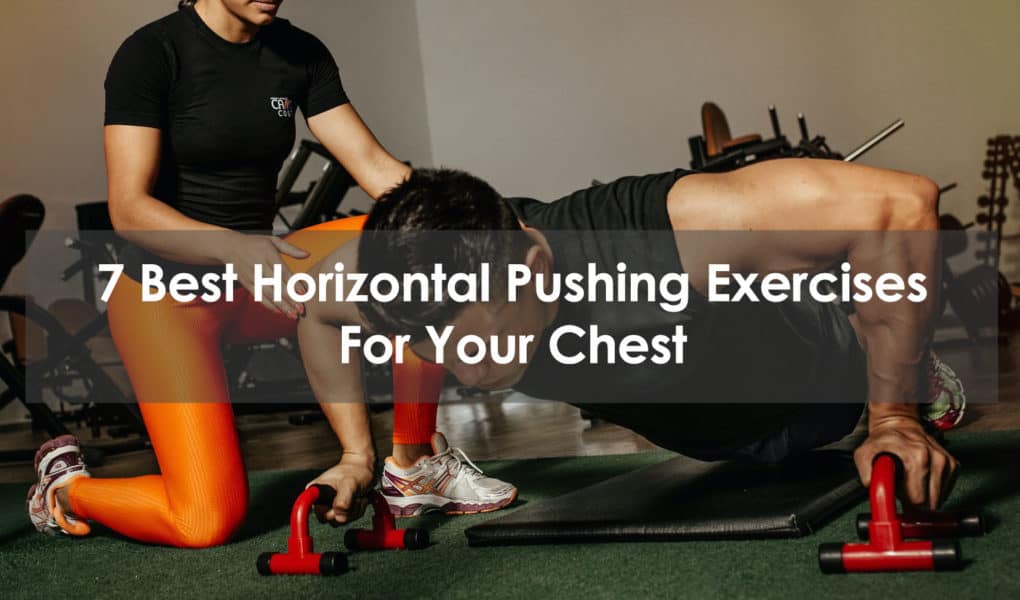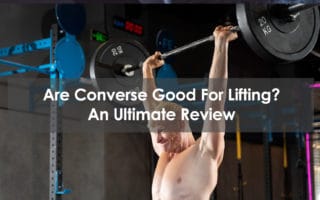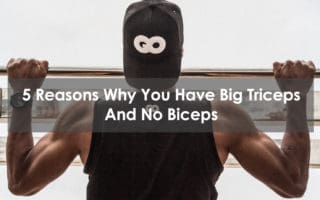Horizontal push exercises are excellent for building overall upper body strength, but they also pay particular attention to your chest muscles.
A horizontal pushing exercise – also referred to as a horizontal pressing exercise – is one in which you are moving some sort of weight straight out in front of you, away from your chest. Examples include the bench press, push-ups, and the chest press machine.
Here, we’re going to outline some of the best horizontal pushing exercises to fire up your pectoral muscles and enhance your exercise routine
1. Bench press
How to
- Lie back on a flat bench with your feet on the ground and legs bent at a 90-degree angle.
- Hold a pair of dumbbells or a loaded barbell with an overhand grip, your palms facing down toward your knees. The weights should be held across your chest, with your arms bent at first.
- Push the weights up and straighten your arms, then lower them back down under control.
- Repeat for 10-12 reps.
Why it works
No list of horizontal push exercises is complete without the bench press; any personal trainer will tell you it’s arguably the most effective exercise for working your chest muscles. Your upper body, more specifically your pectoral muscles, is doing all the work here.
2. Incline bench press
How to
- Set an inclined bench to a roughly 45-degree angle and sit on it, with your feet flat on the ground.
- Hold the weight across your upper chest and push it upward to extend your arms.
- Lower back down under control and repeat for 10-12 reps.
Why it works
This move targets the muscles in your upper chest, which are notoriously difficult to isolate. The incline bench press helps to ensure your entire chest has been worked, though it is one of the more advanced exercises, as your shoulder muscles are also engaged.
3. Chest press machine
How to
- Sit in the seat of the machine and adjust the height so that the handles sit across your chest.
- Take hold of the handles, with your elbows bent, then push them forward to straighten your arms, but don’t lock them out.
- Lower the handles back to your chest, but don’t allow the weights to slam down, then repeat for 12-15 reps.
Why it works
The machine ensures you’re maintaining proper form and the seated position takes the pressure off of the shoulder joint and rotator cuff, meaning there is less potential for injury. This is a perfect exercise to finish off your chest workout with or to build up strength as a beginner.
4. Standard push-up
How to
- Adopt a high plank position with your hands under your shoulders, arms straight, and your legs straight out behind you. You can also perform this bodyweight move with your knees on the ground.
- Bend at the elbows and lower your chest toward the floor, stopping a couple of inches above it.
- Drive back up through your hands to straighten your arms again, then repeat for 12-15 reps.
Why it works
The standard push-up is another timeless exercise for your chest. It requires no equipment and you can easily modify it for a more difficult variation, such as a pike push-up or clap push-ups. If you’re really looking for a challenge, you could try a one-arm push-up! All these push-up variations focus on your chest, as well as some muscles in your arms.
5. Dips
How to
- Place yourself between the dip bars and place your hands on them. Keep your arms straight and take your entire body weight into them, with your feet lifted off the ground.
- Bend your elbows and lower yourself down until your chest is in line with the bars.
- Push back up through your hands to return to the starting position and repeat for 8-10 reps.
Why it works
Dips promote serious muscle engagement in your chest and they’re great for building muscle mass with little equipment. The level of balance required only adds to the stress placed on your chest muscles.
6. Standing chest press
How to
- Attach handles to both sides of the cable machine and set the pulleys so they are in line with your lower chest.
- Stand between the two handles and take hold of them with your palms facing inward, or down to the floor, and elbows bent, so your knuckles point forward.
- Place one foot back and one slightly forward, then perform a small hip hinge to lean your torso forward slightly.
- Push the handles away from your chest so your arms become extended, then bring them back into the starting position.
- Repeat for 12-15 reps.
Why it works
As you are literally moving horizontally, the risk of injury to your shoulders is lower, just like on the chest press machine. As long as you maintain proper form and squeeze your chest muscles, this provides a great workout.
7. One arm dumbbell bench press
How to
- Lie flat on a bench holding a dumbbell in one hand just above your chest. Keep your other arm out to the side for balance.
- Push the weight up until your arm is straight, then lower down under control.
- Repeat for 8-10 reps, then switch arms.
Why it works
You’re experiencing the same benefits as the regular bench press, but by isolating each side of your chest at a time, your muscles are working even harder.
Conclusion
The best way to target your chest muscles is with horizontal pushing exercises, and the list above includes some of the most effective options out there. Whether you’re a beginner or an advanced lifter, these moves will get your pecs popping.
Frequently Asked Questions
Is seated chest press as good as bench press?
One of the advantages of a seated chest press is that it takes the stress away from your shoulders (provided you’re using a chest press machine), which reduces the risk of injury and pain. However, the bench press activates more areas of your chest and allows you to lift heavier weights.







